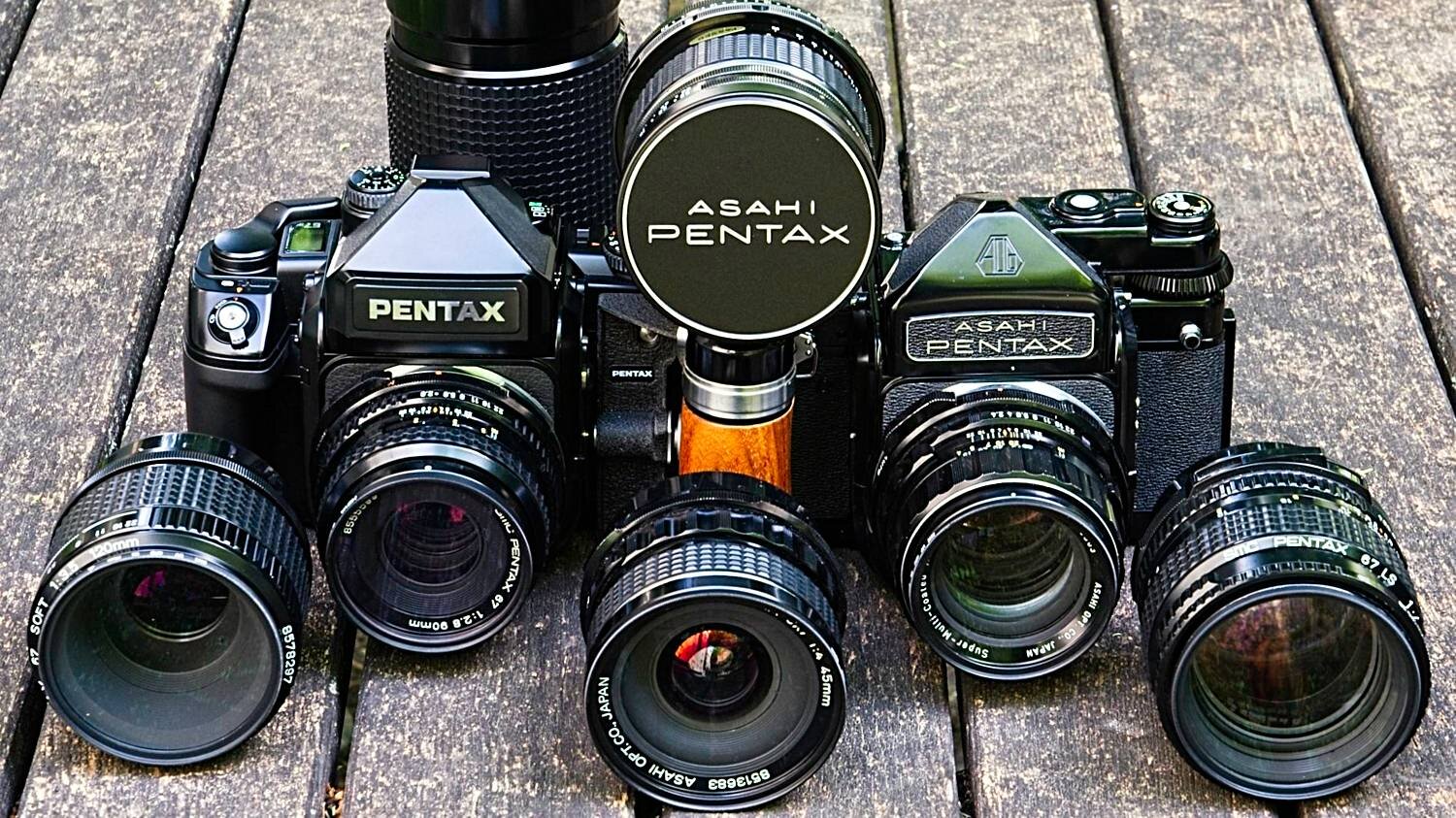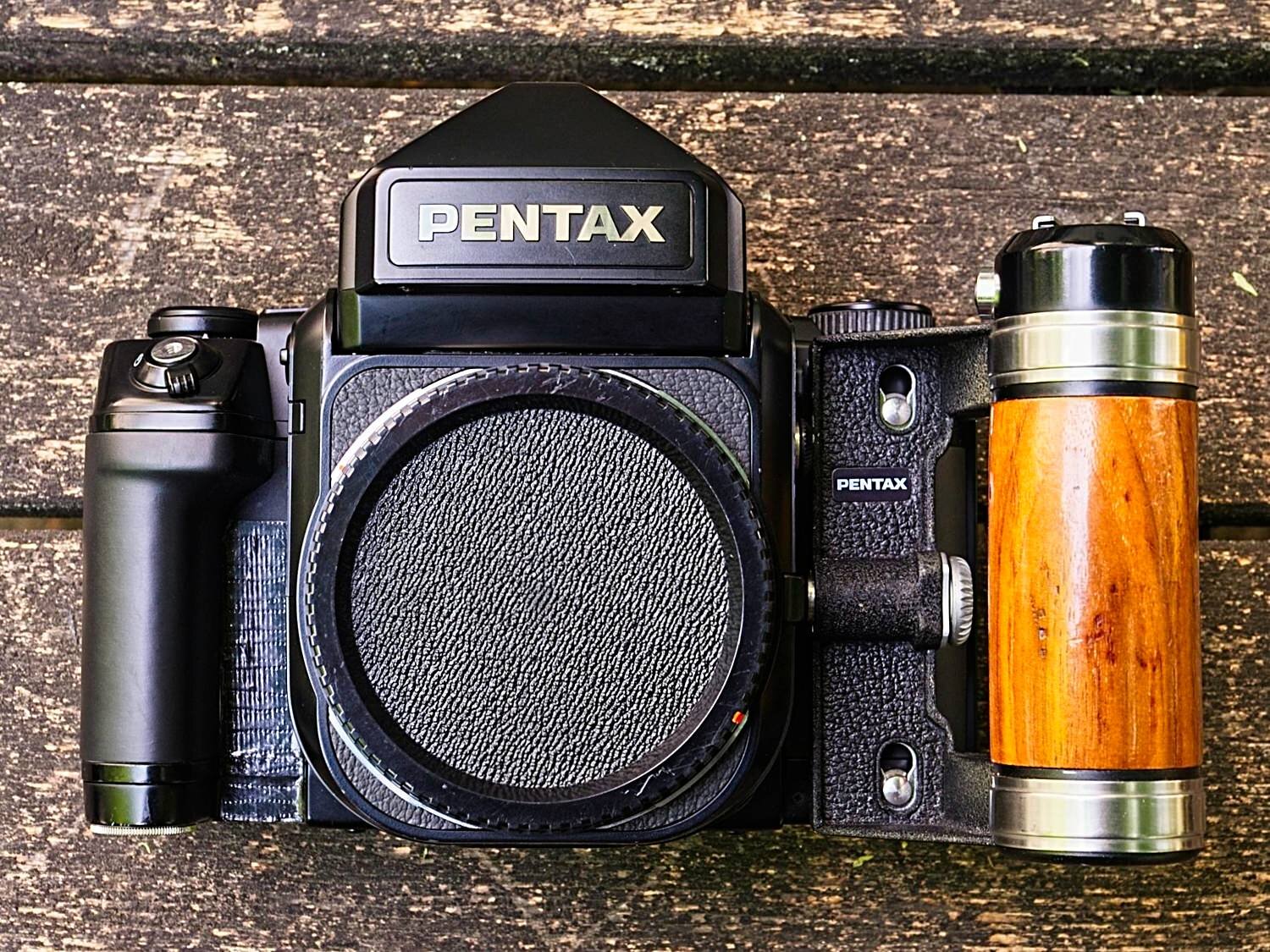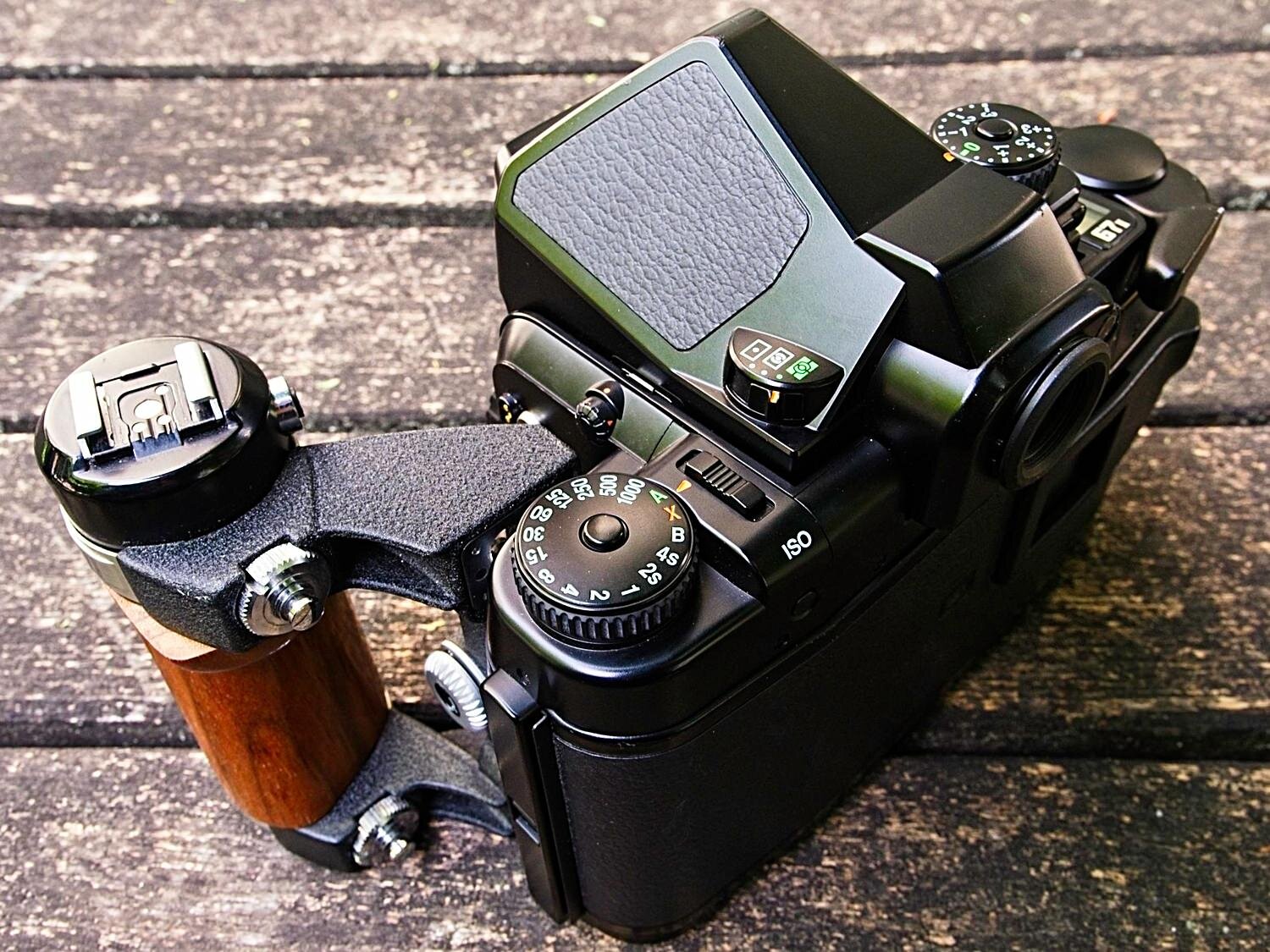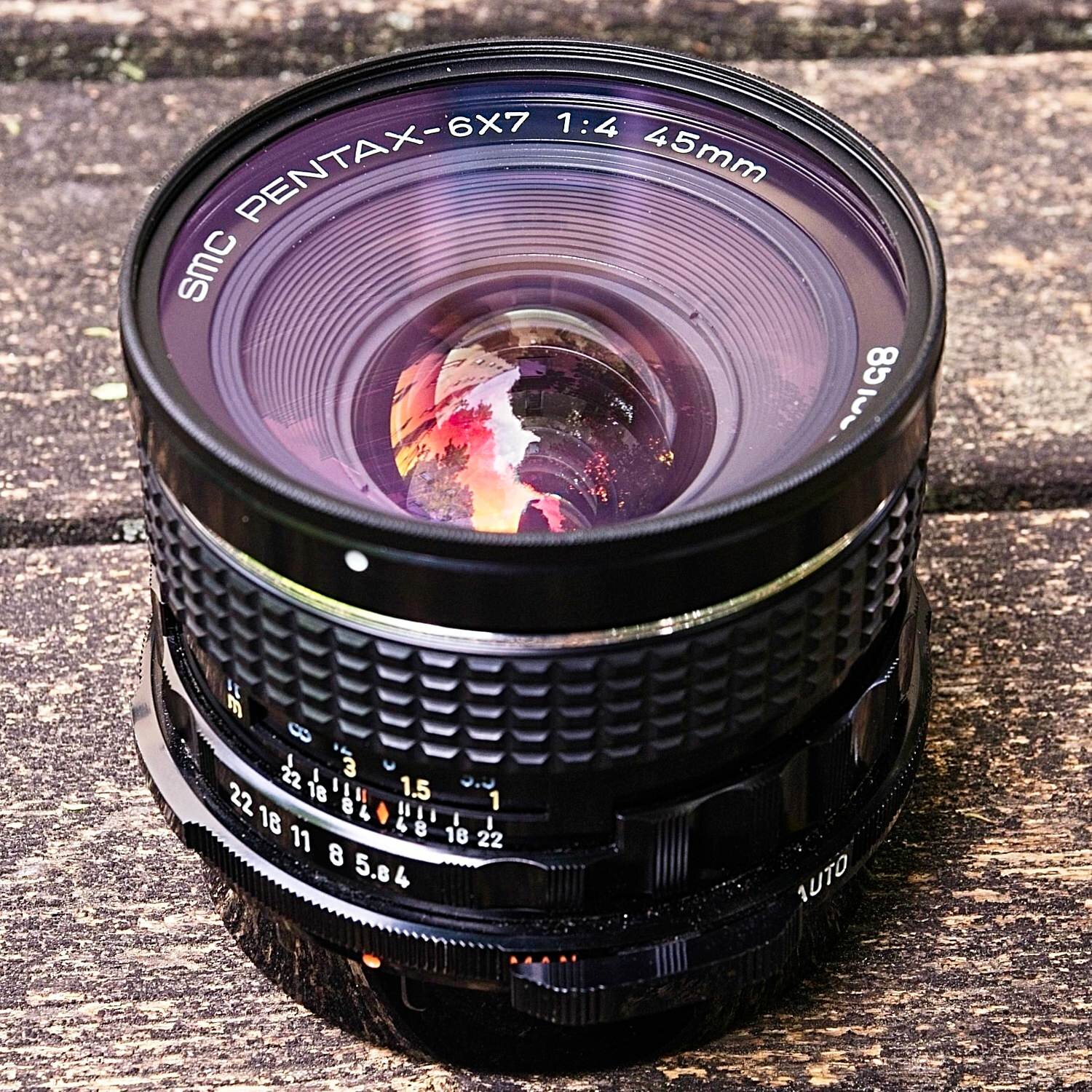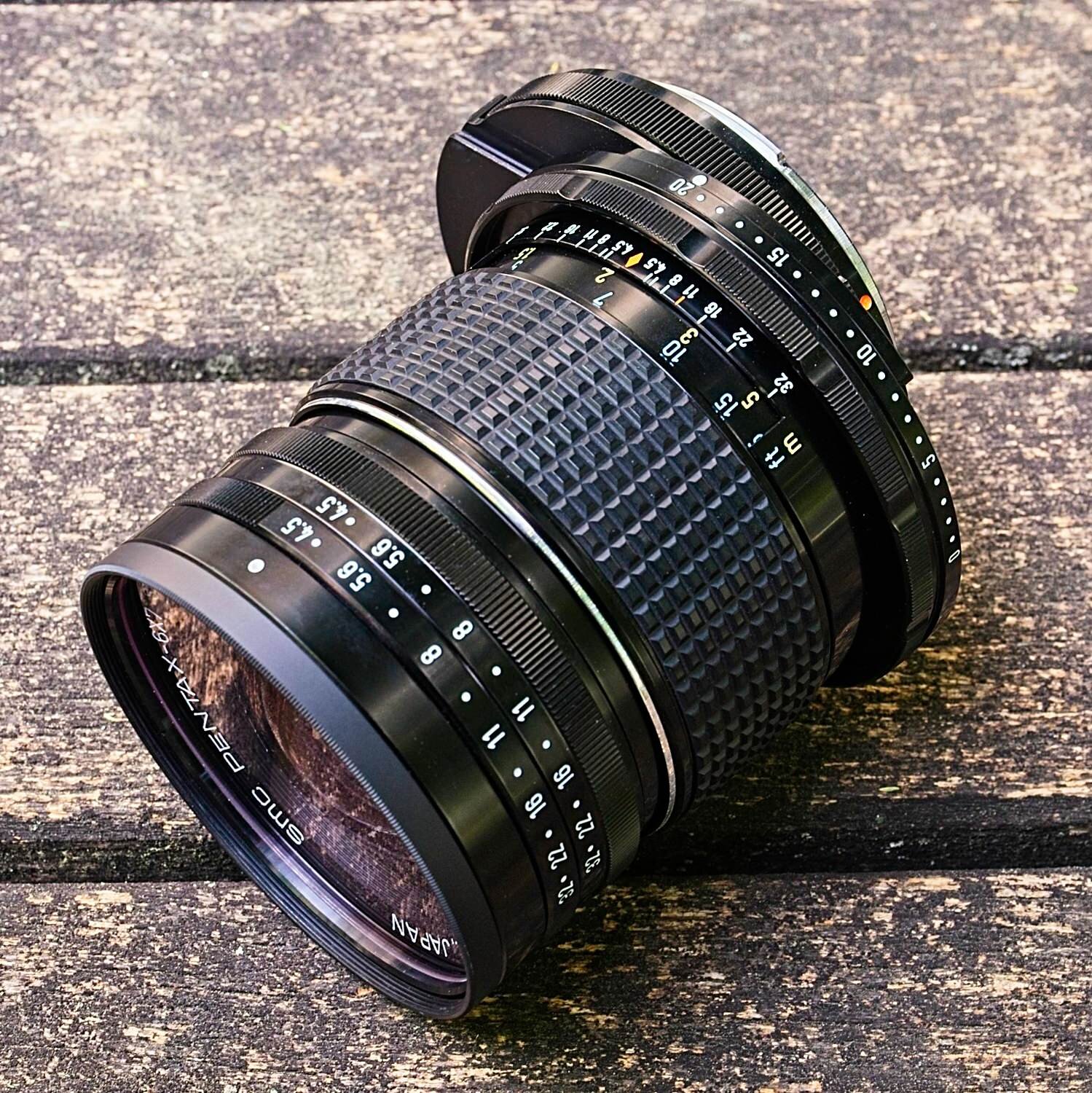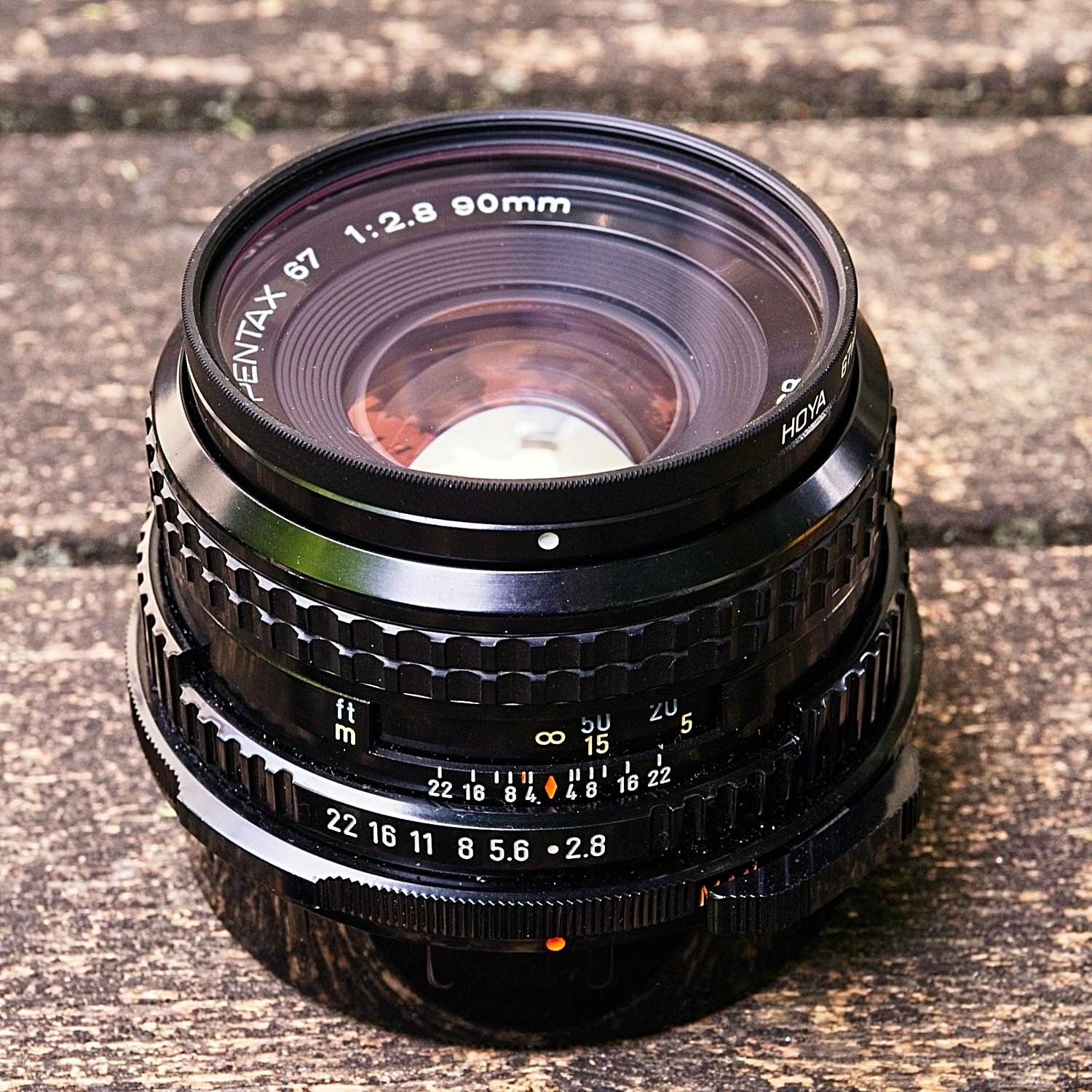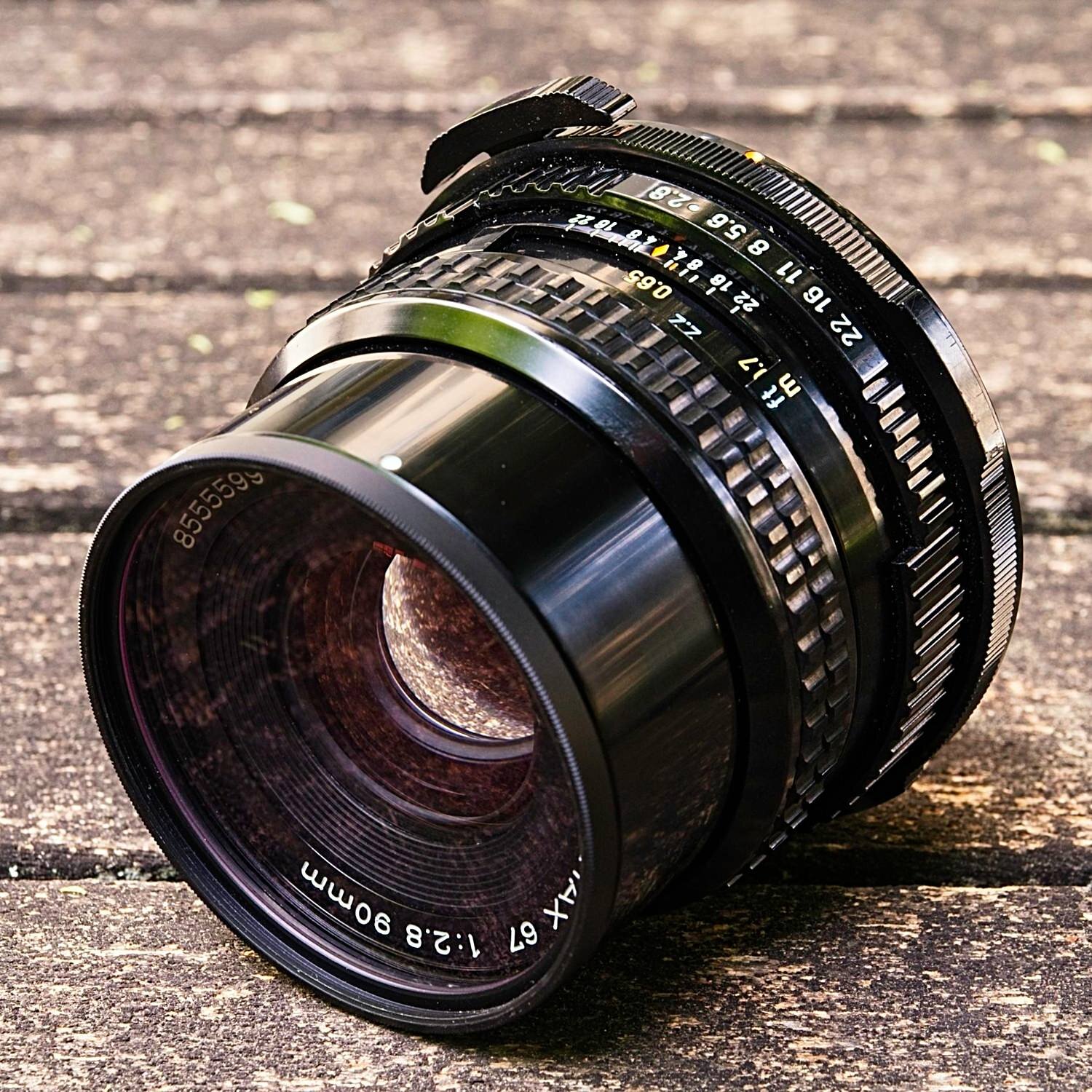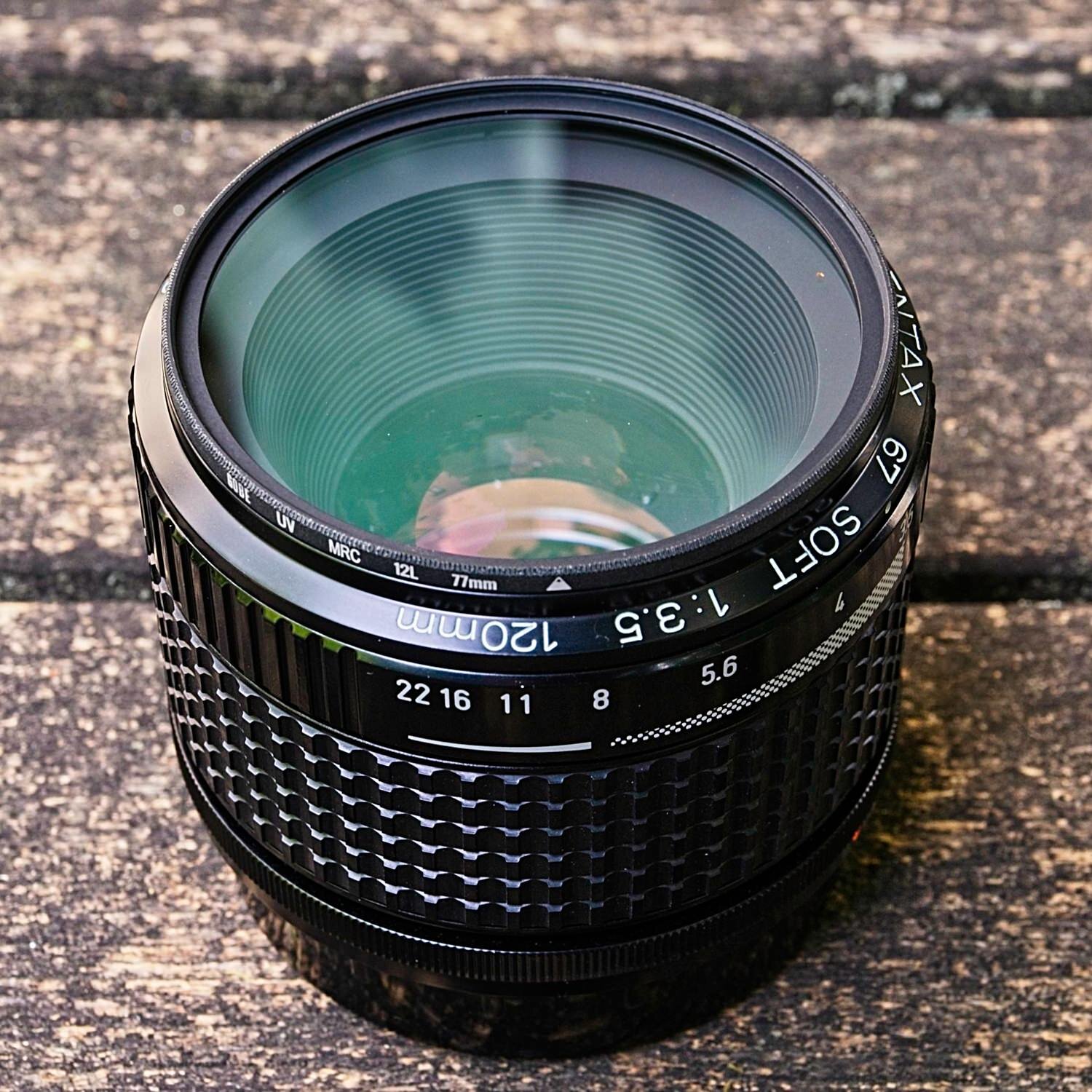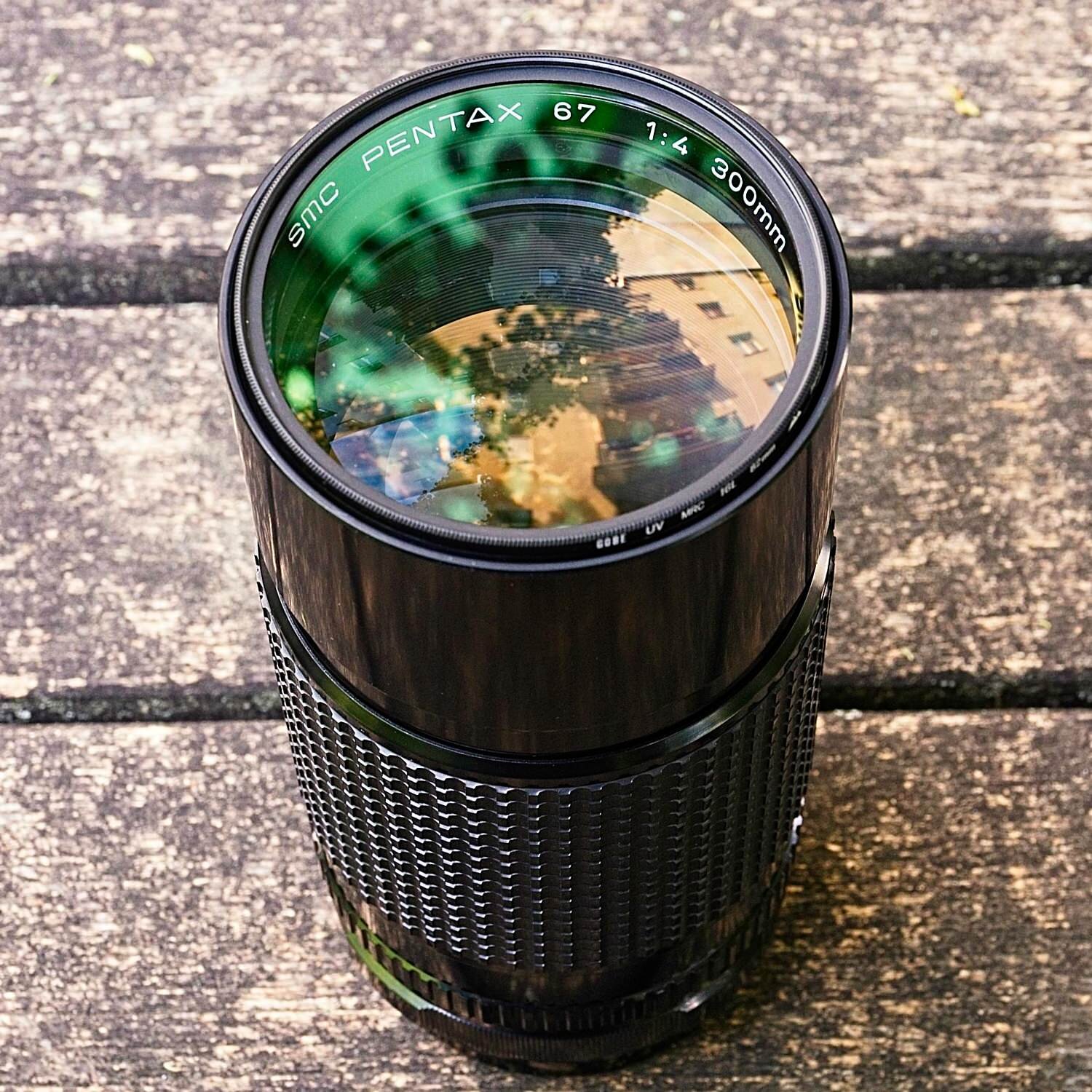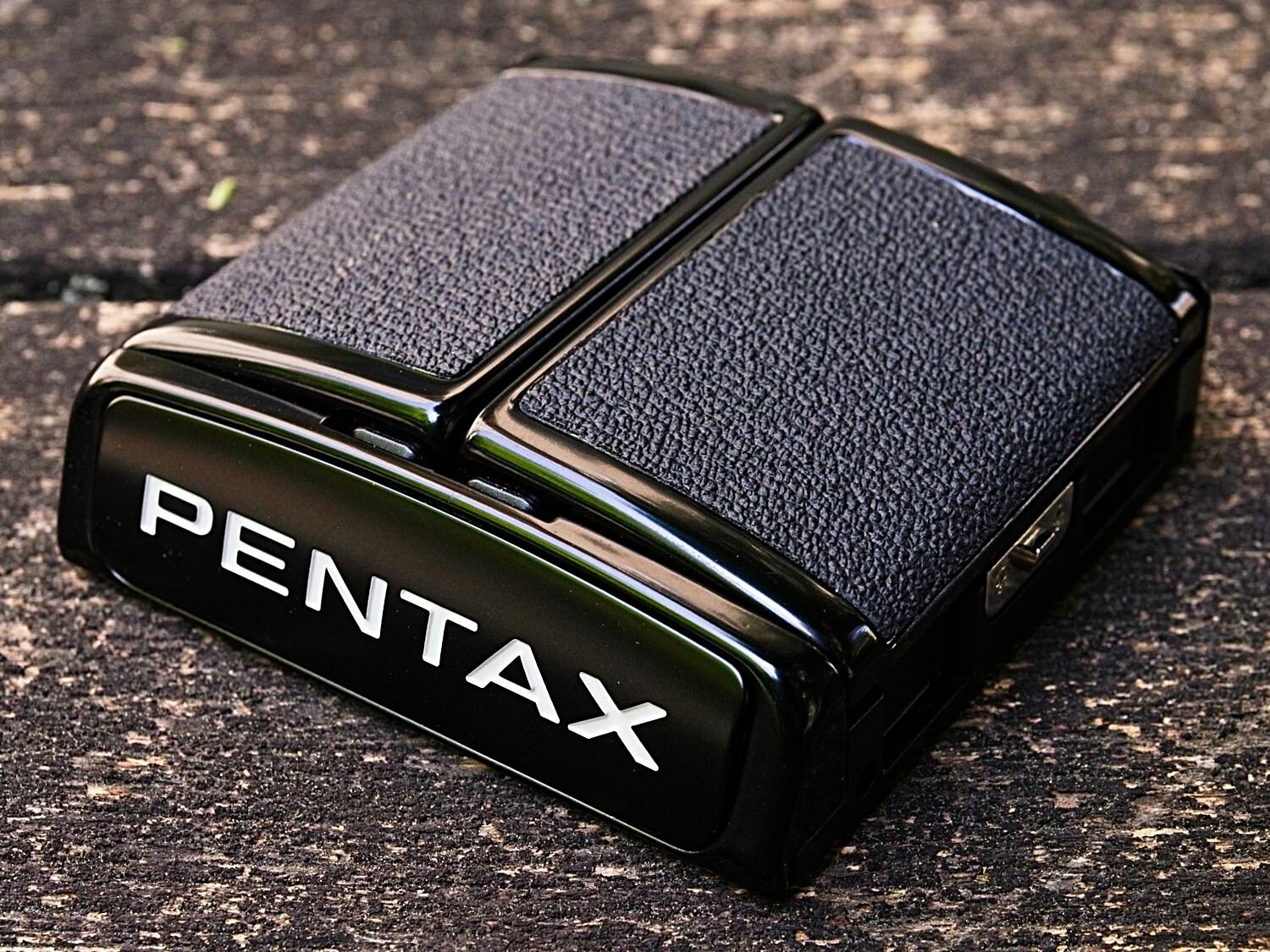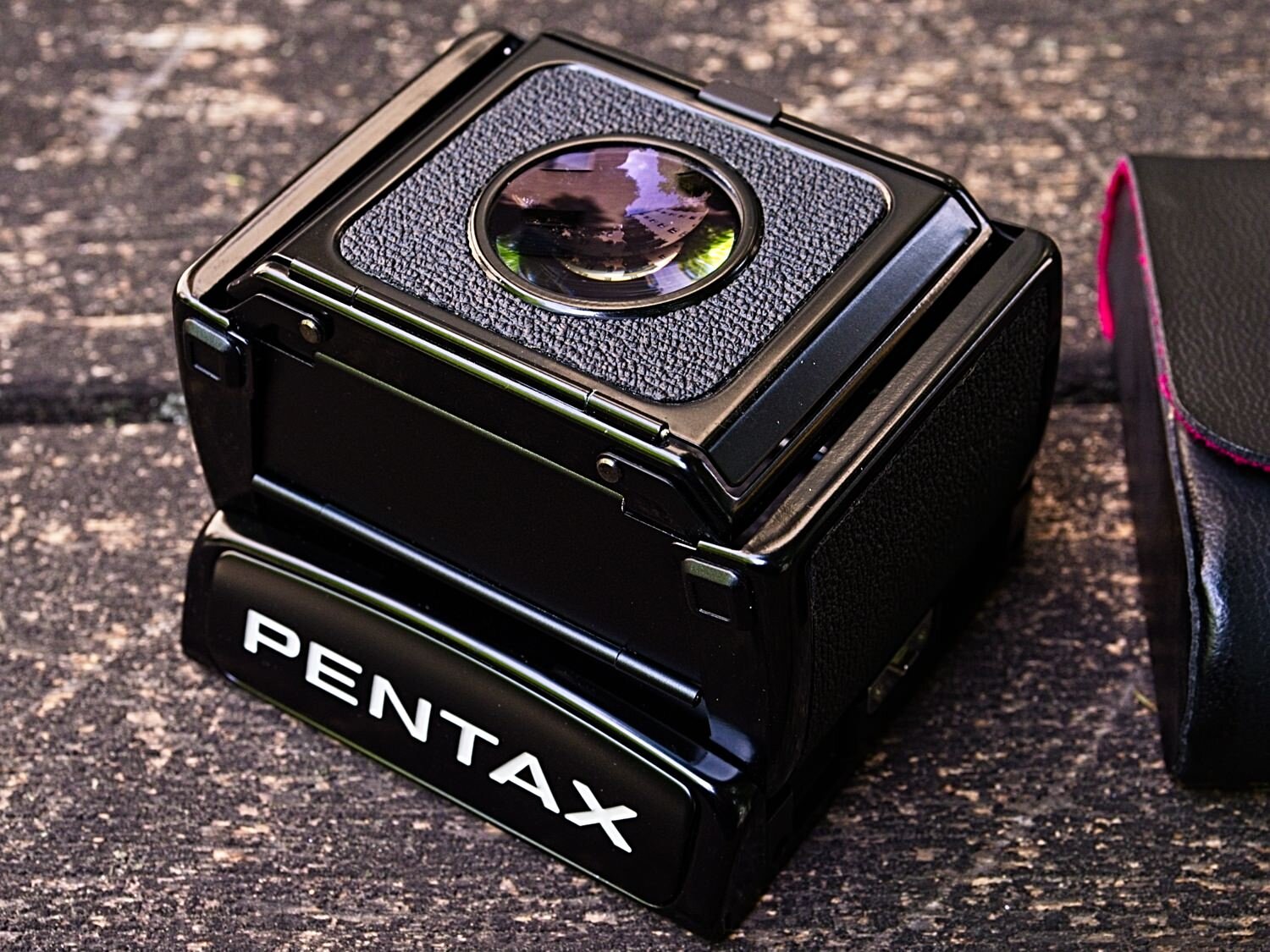Pentax 6x7 System
Introduction
In 2015, after selling my Mamiya C TLRs, I got into the Pentax 6x7 system.
I was intrigued by its versatility and usability. It combines the ergonomics of SLR cameras with the astounding image quality only medium format film can deliver.
The cameras served me well for architecture, artistic photography, studio work and even street photography. Nonetheless, my 67s are on their way out.
It was a great time, and I strike up their swansong!
My (former) Pentax 6x7 gear
Why Pentax 6x7?
Why do you buy a medium format film camera? Probably because you are looking for a significant bump in image quality compared to 35mm, but you are not willing to cope with the somewhat cumbersome large format workflow.
When Pentax designed the 6x7 system back in the 1960ies, they had the professional photographer in mind looking for the ultimate combination of image quality and versatility.
All the lenses, even the early versions, deliver excellent image quality. The selection of lenses and accessories make the system usable for all genres of photography.
The 6x7 frame size guarantees excellent enlargement and cropping properties, even when using higher speed films.
It is no secret that these remarkable features skyrocketed the systems popularity in recent years.
Oh and yes, you can get incredibly shallow depth of field.
User Experience
Studio Photography
The Pentax 6x7 system in general is well suited for studio photography, given that you have no issue with the 1/30 flash sync speed.
In theory, the Pentax 67II should also be compatible with the Pentax TTL flash system - in conjunction with the appropriate flash trigger. As I have never tried that, I cannot comment on how well it works.
The close focusing capabilities of Pentax 6x7 lenses are mediocre. When you want to shoot tightly framed headshots, you are more or less forced to either use the 135mm f/4 or the 100mm f/4 macro lens.
If you want to use the non-macro lenses and get closer, you have to add extension tubes. In both cases it is necessary to adjust the exposure to make up for lens extension.
Indoor Portraiture
Pentax 67II w/SMC Pentax 67 90mm f/2.8 on BERGGER Pancro400
Shooting in improvised locations allows for interesting images, and in the recent years I really tried to push that.
Unfortunately, my Pentax 6x7 system was not well suited for what I tried to achieve in these circumstances.
Shooting head & shoulder portraits with apertures below f/8 means having very shallow depth of field to work with, almost regardless of which lens you use. Add dim lighting conditions to the mix and you just got yourself into a situation where it is very difficult to nail focus. Although I have good eyesight and I took my time, I missed perfect focus on an average of 2 out of 10 frames. Even slight subject movement can throw the focus off.
Outdoor Portraiture
Misfocusing is less of an issue with plenty of available light, even when shooting closer with a large aperture.
Some photographers are afraid of the mirror slap causing a blur in their images when shooting the 6x7 handheld, but I never had any significant loss of sharpness as long as I adhered to the [shutter speed = 1/focal length (full frame equivalent)]-rule.
Architecture & Landscapes
Franz Eisl working with the Pentax 67II
In these genres, armed with a Pentax 6x7 and a very sturdy tripod, you can’t go wrong.
There are some things to consider when using lenses like the 300mm f/4 (please refer to “Lenses”) and I think it is beneficial to have a 6x7 body with the mirror lock-up function to minimize vibrations, but those are only minor issues.
A certain level of dedication is required, though, as the system is quite heavy, especially when bringing additional lenses and a spare body along with the obligatory tripod.
Consider hiring a sherpa (aka girlfriend / boyfriend) or get ripped at your local gym.
Camera Bodies
I owned three Pentax 6x7 bodies in total - two 67IIs and one 6x7 MLU. At one point I sold off one of the 67IIs and later decided to get a 6x7 MLU. The reasons for not re-buying a 67II were that it would have been considerably more expensive and that it offers no real advantages - except the matrix metering and aperture priority mode. When used in the studio or with an external light meter, it does not really matter and that’s why I decided to save some money.
Reliability
I never had any issues with the cameras, but I heard that the 67II is harder to repair compared to the other versions.
One problem to watch out for is the film advance. Careless use / abuse can damage the mechanism and parts are often only available through cannibalizing another camera - a costly and nerve-wrecking endeavour.
All Pentax 6x7 bodies require batteries to work - so always bring spare batteries!
Pentax 6x7 MLU
Metering Prism available
Changing the metering head before detaching the lens will damage the camera.
Mirror Lock-Up (see last image)
Very sturdy construction - confidence-inducing I’d say!
Pentax 67II
Good matrix metering - don’t expect Nikon F6-level metering accuracy, but is pretty solid and usable even when shooting slide film
Spot & centre weighted metering modes
Aperture-Priority mode
Metering head is coupled via electronic contacts, so you don’t have to follow a certain procedure when changing finders.
Mirror Lock-Up
Double Exposure mode
Smooth (= more delicate?) film advance
Contemporary appeal
Lenses
45mm f/4
Equivalent focal length: ~24mm
With an equivalent focal length of 24mm, the 45mm is well suited for architectural work and landscapes. In terms of sharpness, contrast and colour rendition, I was always happy with its performance. It exhibits slight barrel distortion. For my project “Dream Homes” I used this lens extensively, as I could not get enough distance between me and the houses. I digitally corrected the perspective distortion in Affinity Photo after scanning the negatives.
SMC Pentax 6x7 45mm f/4
SMC Pentax 6x7 45mm f/4
75mm f/4.5 Shift
Equivalent focal length: ~35mm
Excellent build quality of the shift mechanism
Manual diaphragm control requires stop-down metering or the use of an external light meter
The 75mm is the only shift lens available for the 67 system. Wide enough for most applications, it is a great lens for serious architecture photography. It is quite long as it has to accommodate the shift mechanism. Regarding performance, it leaves nothing to be desired. Good sharpness and negligible distortion are the redeeming qualities of this special purpose lens.
SMC Pentax 6x7 75mm f/4.5 Shift
SMC Pentax 6x7 75mm f/4.5 Shift
90mm f/2.8
Equivalent focal length: ~50mm
Very compact design
The 90mm is one of my favourite lenses for the system. It is the physically smallest lens for the 6x7 system. From an image quality perspective it performs very well, even wide open. Being a “nifty fifty”, it is very versatile for a variety of applications. Really nothing to complain about.
SMC Pentax 67 90mm f/2.8
SMC Pentax 67 90mm f/2.8
105mm f/2.4
Equivalent focal length: ~55mm
This lens is well known for its beautiful bokeh when shot wide open. The series “Portraiture III - Caroline” was mostly captured with this lens. Although you can’t find any wide open shots in this series, you can clearly see the amazing image quality this lens delivers (for this shoot, I stopped down to around f/8 ~ f/11, ). I would not mind getting the older version, as it is cheaper and still excellent.
Asahi Pentax Super-Multi-Coated Takumar 105mm f/2.4
Asahi Pentax Super-Multi-Coated Takumar 105mm f/2.4
120mm f/3.5 Soft
Equivalent focal length: ~60mm
Manual diaphragm control requires stop-down metering or the use of a light meter
Minimum focusing ~0,75m - makes it suitable for portraiture
The soft focus effect is controlled by the aperture. From f/11 upwards, the soft focus effect is gone and the lens performs like a normal 67 lens.
Focusing the lens is very tricky. You have to adjust the lens after focusing, using the markings on the lens barrel. There is a somewhat practical workaround, though. Stop down the lens to f/11, focus it and then open up the lens to the desired aperture. I highly recommend reading this online discussion on focusing the lens. I found it to be very helpful.
I did not get this lens for a project or with a distinct creative vision in mind. It was more the desire to own something truly special for the Pentax 6x7 system. And being a soft focus lens, it is very special indeed. The soft focus effect is something you either love or hate. In any case, the lens has some very unique characteristics and is comparatively cheap.
SMC Pentax 67 120mm f/3.5 Soft
165mm f/4 LS (Leaf Shutter)
Equivalent focal length: ~85mm
Built-in leaf shutter allows for flash synchronisation from 1/60 to 1/500 of a second
Minimum focusing 160cm
The 165mm LS exists to compensate for the rather lackluster flash sync speed of 1/30. It is important to note that you have to cock the leaf shutter in the lens after every shot and that you have to attach your flash cord directly to the lens barrel. I found this to be a little cumbersome and inconvenient, as you have to make sure that the flash cord does not come off while focusing the lens. Nonetheless, there is no other way to get higher flash sync speeds out of the 6x7 system - you have to take it or leave it.
The lens can be set so that the leaf shutter stays open all the time. Then, the lens then works just like a regular 85mm equivalent lens.
85mm of equivalent focal length makes it a good portrait lens, but you have to be aware that its minimum focusing distance is 160cm so you can’t really shoot close-up portraits without using extension tubes.
SMC Pentax 67 165mm f/4 LS
SMC Pentax 67 165mm f/4 LS
300mm f/4
Equivalent focal length: ~200mm
Very large and heavy
No tripod collar
Built-in lens hood (see first image)
Minimum focusing 500cm
This lens is perfect for architectural work and landscapes. The long focal length allows you to capture distortion-free images - “Becher-style”.
When shooting this lens, you have to put it on a very sturdy tripod with a high-quality head. Its immense weight of about 1,4 kg can cause the head to tilt during exposure.
After focusing the lens, you also have to wait a little bit as it tends to slightly “vibrate”. A tripod collar would have helped to eliminate this issue, but unfortunately the designers did not leave enough room for one.
With a minimum focusing distance of 500cm (290cm with the later ED version), the 300mm is unusable for headshots without extensive use of extension tubes - pun intended.
Don’t let the bargain price tag fool you, it delivers nice bokeh and is well worth getting, just be aware of its limitations.
SMC Pentax 67 300mm f/4
SMC Pentax 67 300mm f/4
Accessories
Folding Waist-Level Viewfinder
The folding waist-level viewfinder significantly slims down the 67 so it takes up less space in the camera bag.
It is a great accessory for many applications. The fold-out loupe helps achieving precise focus when using the camera for still lifes and such.
You can also hit the streets Vivian Maier-style - but beware: After firing the shutter, your subject might run for cover and after checking its body for bullet holes, it might start asking inconvenient questions.
Pentax 67 Folding Waist-Level Viewfinder
Pentax 67 Folding Waist-Level Viewfinder
Beattie Intenscreen
This is a third-party screen for the Pentax 6x7 MLU. As the screen is far brighter than the original, it impacts the light meter readings you get from the metered prism head. Use an external light meter to be on the safe side.
It does not feature a center-circle focusing aid.
Beattie Intenscreen for Pentax 6x7 with grid
Pentax Focusing Screen BG-60
Compatible with the Pentax 67II, it features a grid layout, which can be useful for architecture and still lifes.
I recommend using it in conjunction with a focusing loupe like the one built into the waist-level viewfinder, as there is no center-circle focusing aid on this matte screen.
Pentax Extension Tubes (14/28/56mm)
The extension tubes are absolutely necessary when you consider using the Pentax 6x7 system for close-up portraiture and you don’t have one of the macro lenses in your arsenal.
As already stated, you have to calculate the necessary exposure compensation depending on the extension of the lens.
So before shooting with a model, you have to do the math to avoid lengthy delays and confusion that ensues when you whip out your calculator and try to figure out the correct f-stop. There is a very knowledgeable Mr. Sasha Krasnov who wrote an excellent article on the extension tubes and all the calculation involved. Recommended!
Pentax Extension Tubes (14/28/56mm)
Wooden Hand Grip
The wooden handgrip is a somewhat strange accessory.
Its first - quite obvious - purpose is to provide a hot shoe (or a cold-shoe on earlier models) to mount your flash.
Its second intended purpose seems to be to add stability when using the camera, but I never found out how this could be a thing. In order to use the grip to stabilise the camera, you would have to take your hand off the lens after focusing and then grip the handle.
I don’t think there is much benefit in doing that.
Left: 6x7 grip w/cold shoe
Right: 67 grip w/hot shoe
Verdict
The Pentax 6x7 system is great - there is no doubt about that. So why did I sell it?
Focusing Issues in Dim Light
It is just infuriating to miss focus and therefore ruin pictures that would have otherwise turned out great. One might say: “Well, you can stop down the lens.” While this is true, what is the point of having a medium format system that gives me this great shallow depth of field look when I can’t really use it reliably.
Close Focusing
More than once I found myself in a situation where I just wanted to get a quick close-up shot of my subject - no chance with the 6x7 lenses. And using extension tubes is a chore.
Bulk & Weight
Visiting clients and traveling by public transport can be quite tedious with so much bulk. I don’t even want to imagine lugging this stuff around for a wedding.
Personal Impression
6x7 frames with low-ISO film look almost like digital images after scanning or printing.
Goodbye, my love — until we meet again!
I was always impressed - even in love - with the image quality, but more than once the Pentax 67 prevented me from shooting the way I wanted to. It got in my way and sometimes messed up an essential shot.
With my Nikon F6 and the AF-D Nikkor 85mm f/1.8 I can focus quickly and reliably, get as close as I want and I don’t break my back on the way to the shooting. Now I can’t achieve the same level of image quality / resolution as with the Pentax 6x7, but when I shoot with film, I don’t mind some grain and an organic look.
For flawless images, I can always bring my digital Olympus OM-D kit with an array of second-to-none PRO lenses.
So here are my key takeaways from my 5-year relationship after the recent split-up:
The mighty Pentax 6x7 is one of the best medium format systems out there. But at the end of the day, it occasionally let me down when I needed it the most. Those wounds did not heal well, and so I have to let go. Maybe our paths will cross again sometimes in the future.

